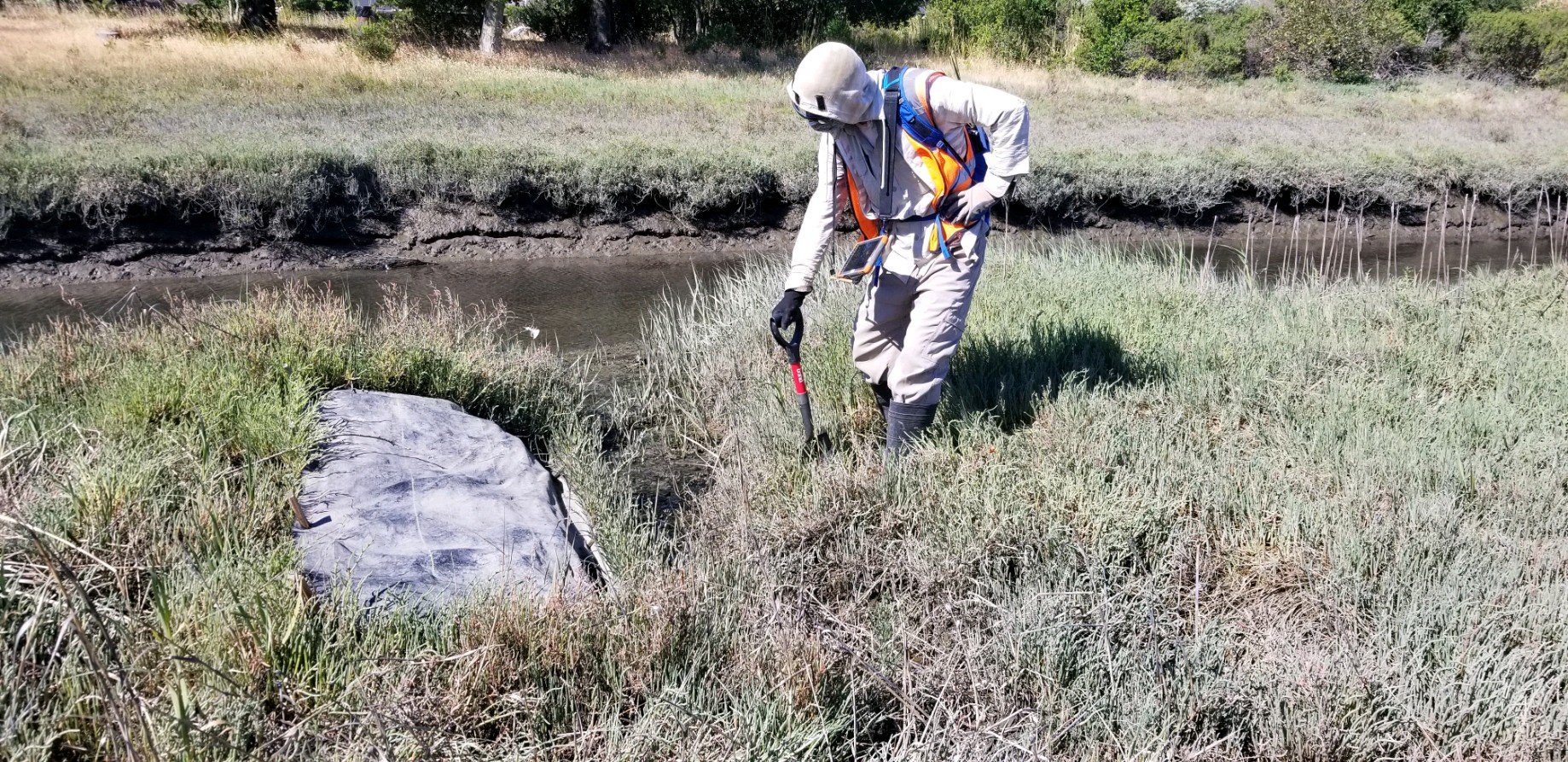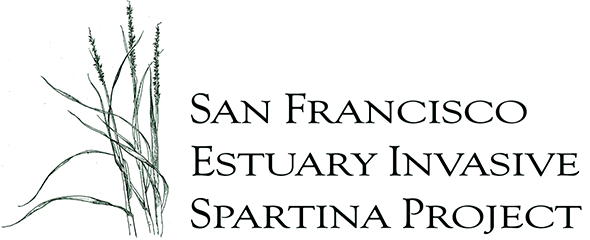Bair Island restoration site, San Mateo County.
Monitoring and Treatment
Monitoring
Each year, from June to November, Invasive Spartina Project biologists survey 40,000 to 70,000 acres of San Francisco Bay marsh and shoreline to map invasive Spartina and inform treatment plans. Later, treatment crews return to visit previously mapped features. This treatment plan reduces impacts to sensitive habitat, minimizing the amount of disturbance to mudflats and wetlands. By creating a thorough inventory of cordgrass, crews can target the invasive hybrid Spartina, while saving as much native Spartina foliosa as possible. Read more about the difference between hybrid and native Spartina.
See the most recent treatment schedule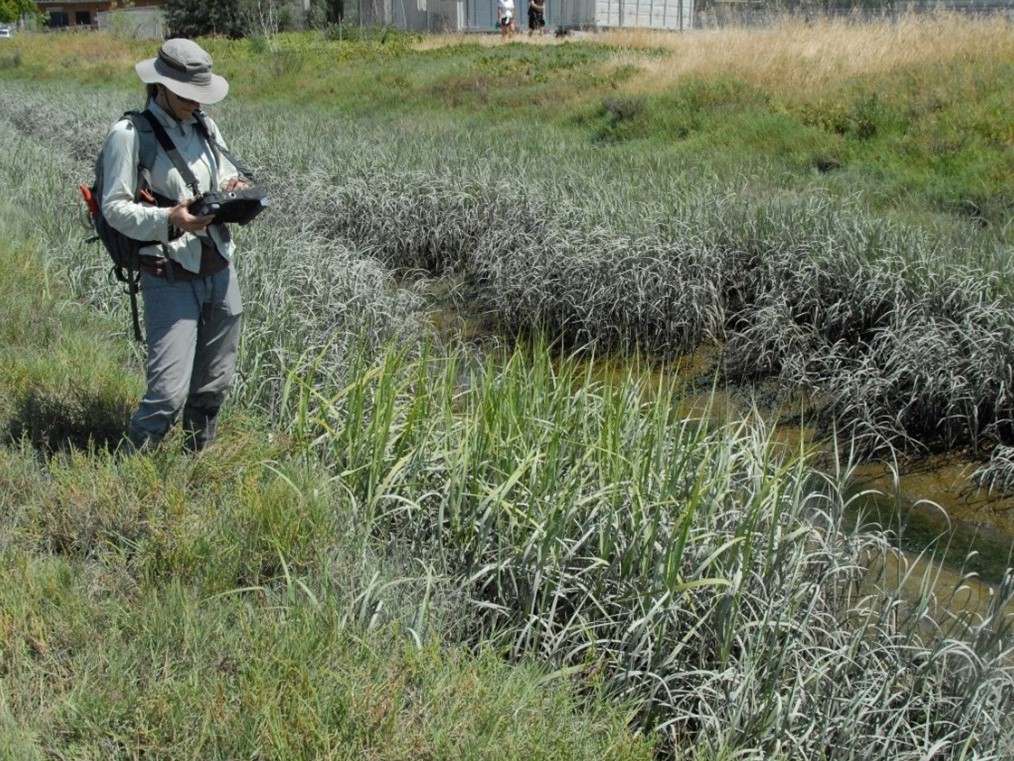
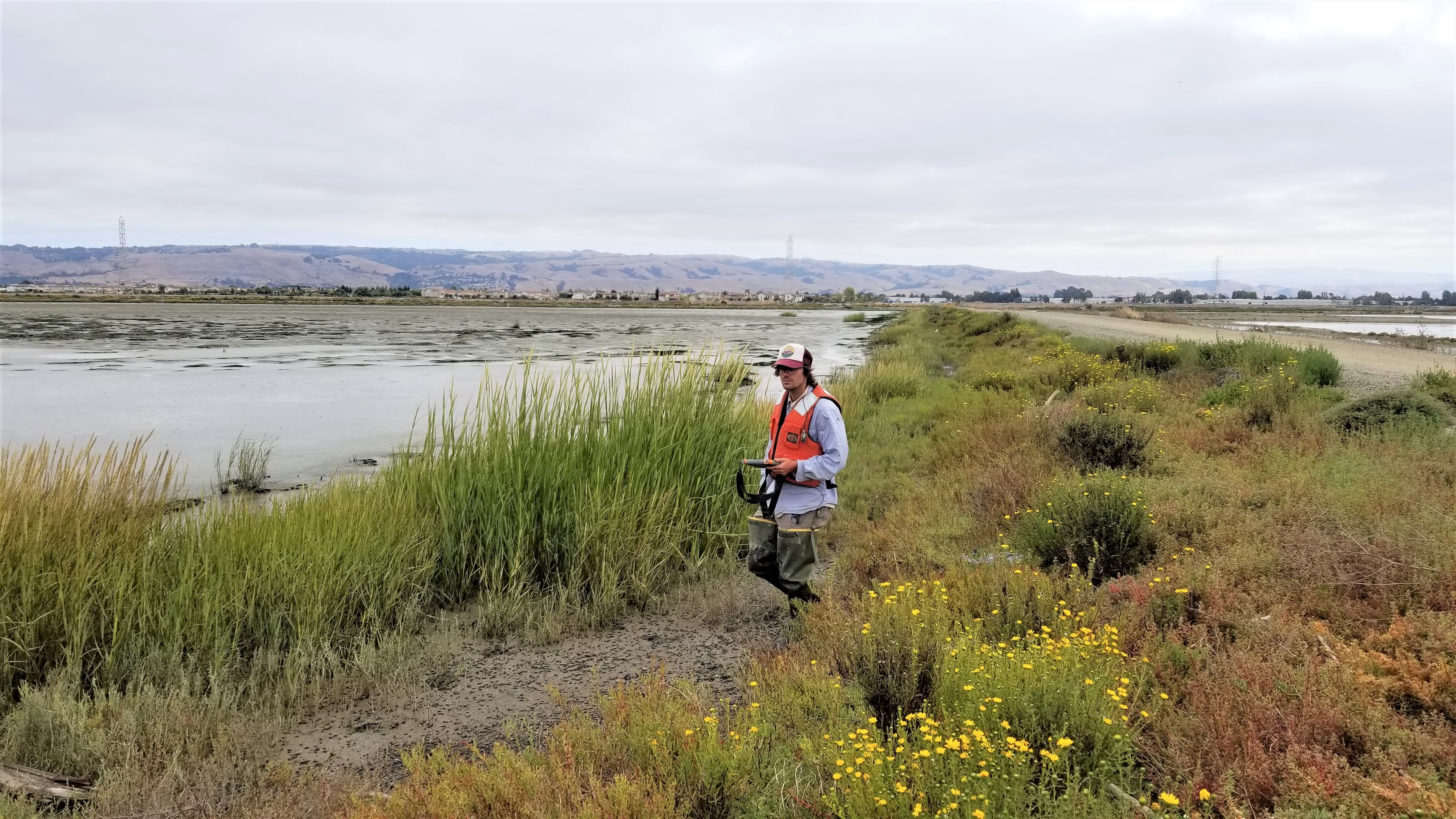
High-tech monitoring tools
As they map sites for treatment, biologists have the difficult task of discerning hybrid Spartina (to be treated) and native Spartina foliosa (to be protected). (Read more about the different species.) Spartina species can be tricky to positively identify, as it has many variations, depending on marsh conditions and location in the Bay. Also, identifying differences between the hybrid and native plants is easier with mature plants, which occur later in the growing season. However, treatment is more effective before the plants have matured and set seeds, so as to prevent a new generation of plants from sprouting.
To refine field identification, the team has developed a proprietary data-analysis tool that works on their hand-held tablets, nicknamed “LinDA” (short for Linear Discriminant Analysis). Its algorithm incorporates morphological measurements and genetic results from more than 500 lab samples collected for DNA analysis to assist in accurate field identification.
Treatment
Hybrid Spartina treatment is timed around several factors. In areas where Ridgway’s rail are actively breeding, treatment is timed to begin after the breeding season has ended, to minimize disturbance. Tides, wind, and rainy weather can also affect treatment schedules. The goal is to treat as much invasive Spartina as possible before it goes to seed, to minimize the seed bank and prevent the next generation of plants from sprouting.
For the majority of project sites, teams use backpack sprayers and apply targeted spot treatment of herbicides, which reduces impacts to sensitive habitat. Technicians on foot, guided by a biologist with a GPS map, approach via the mudflat to reduce disturbance to wildlife associated with the marsh plain.
Larger infestations are treated by hauling hose out from chemical tanks on an airboat or truck. Airboats are essential at marshes that are newly-opened to restoration, where dense hybrid Spartina stands may clog channels and shorelines. Flat-bottomed airboats are also able to safely navigate shallow, muddy waterways.
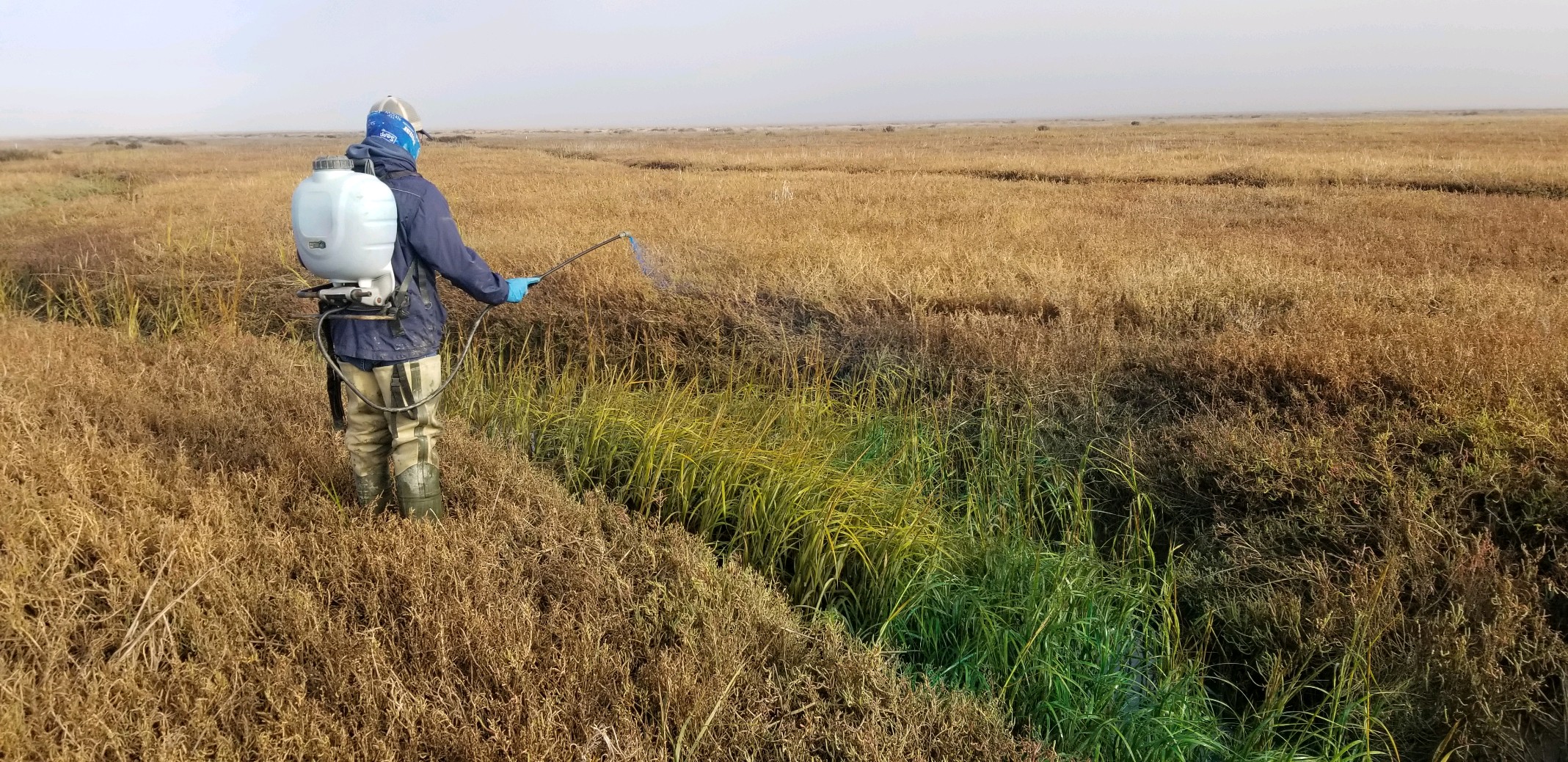
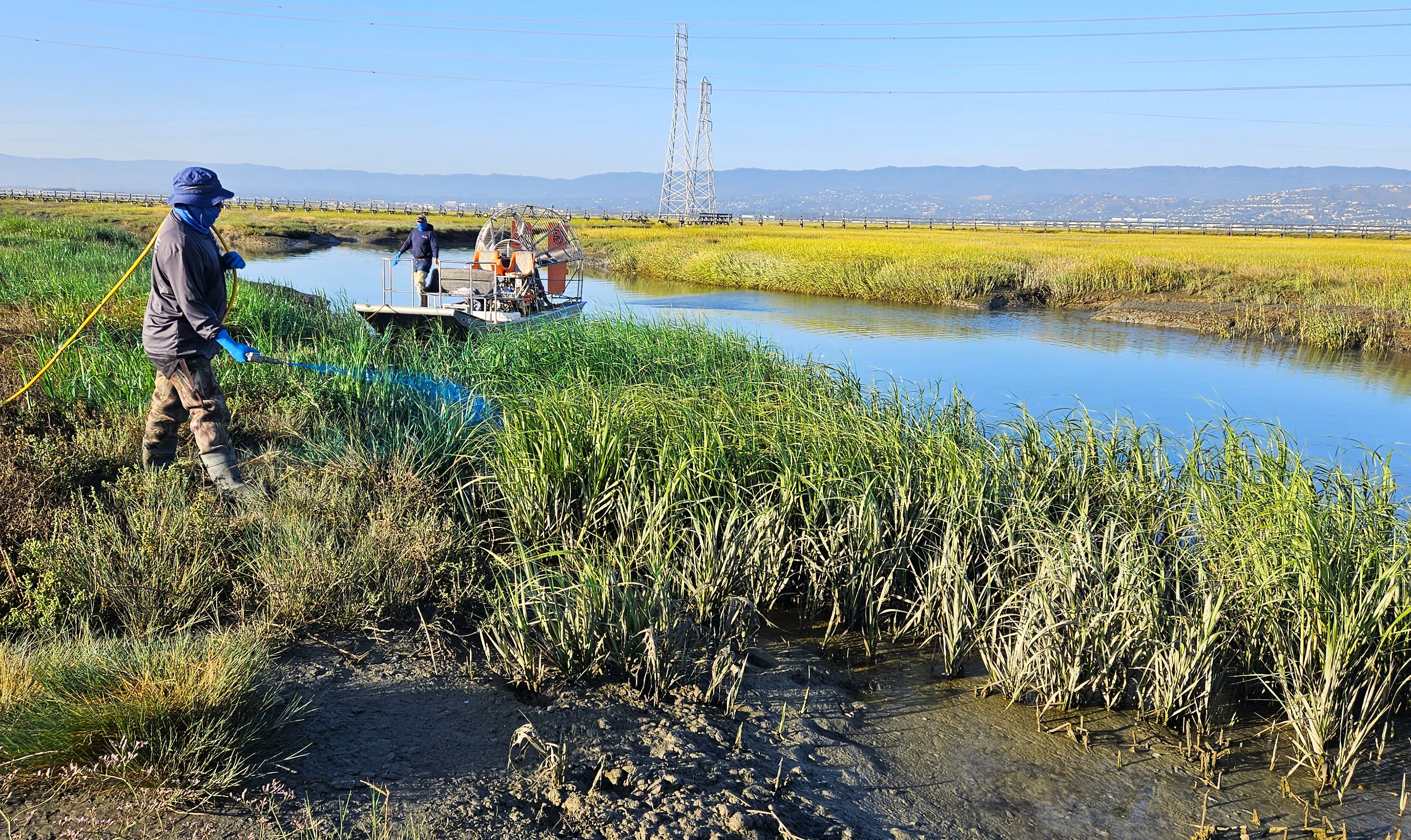
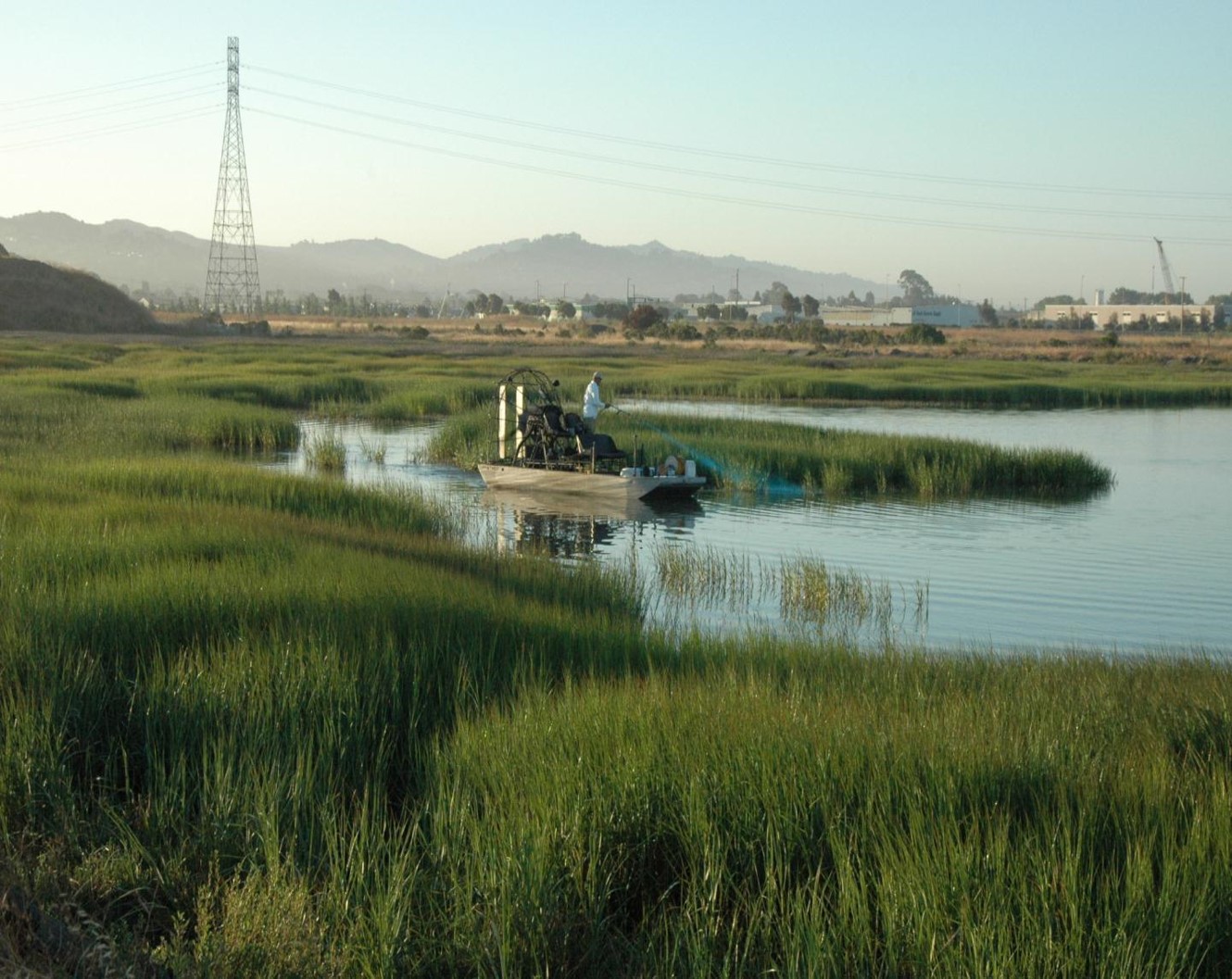
Chemicals and water testing
To effectively treat hybrid Spartina, the treatment team uses an aquatic formulation of the herbicide imazapyr. The U.S. Environmental Protection Agency considers imazapyr a Category IV pesticide; “practically non-toxic” to wildlife, including mammals, birds, fish, and aquatic invertebrates. This chemical formulation is designed to break down rapidly in water, has a low potential to bioaccumulate, is not carcinogenic, mutagenic, or neurotoxic, and is broken down by UV sunlight.
Regular water quality monitoring by the treatment team confirms that a 90% reduction of imazapyr is normally detected within the first week after application, and, even directly after application, it is detected at far lower concentrations than would be a level of concern for wildlife. Following the most up-to-date scientific research, this project uses a blend of tools that balances the health of the marshlands and its inhabitants with the most effective treatment methods.
Digging and tarping
At a few sites with restricted or limited herbicide use, teams may use other methods: digging or tarping. Tarping involves using heavy plastic, polypropylene, or other light-blocking material to cover the ground and prevent weed growth. Because tarps must be left in place for several months to be effective, this method is most practical for small areas and to stop an isolated infestation. Digging and tarping alone are not effective against a wide-spread hybrid Spartina monoculture, as either method would cause too much disturbance to the wetlands. Also, rhizomatous plants are difficult to dig effectively – any missed rhizome (root stalk) fragments will regrow.
